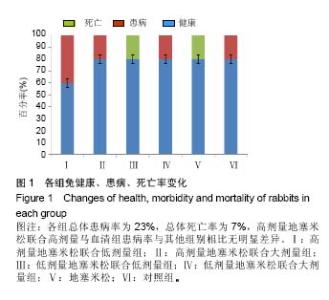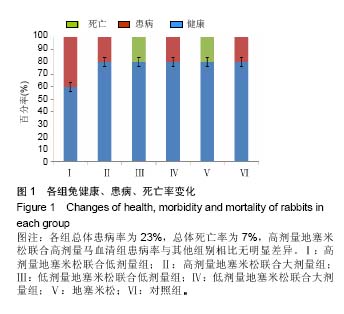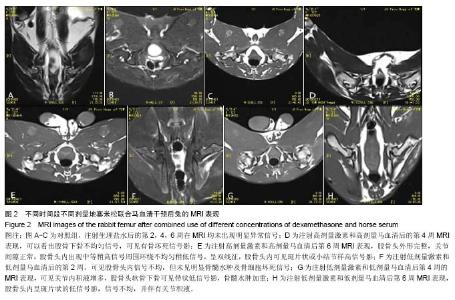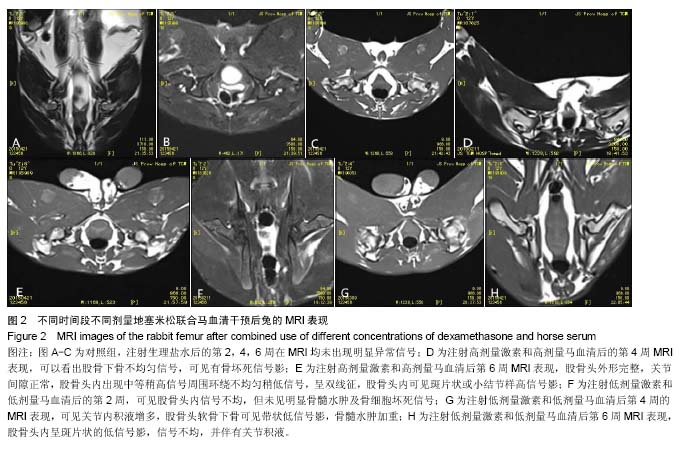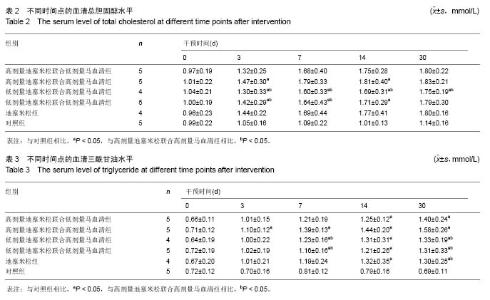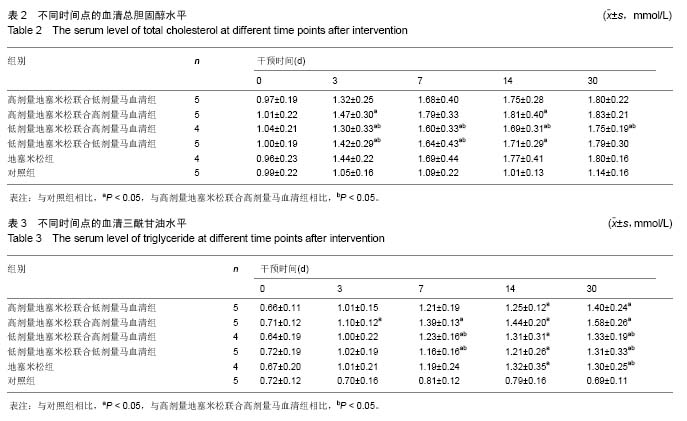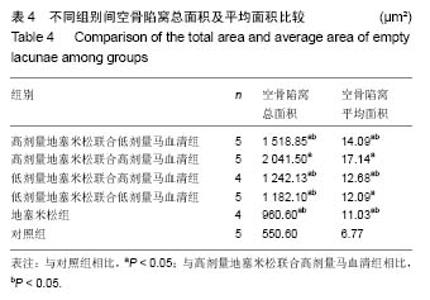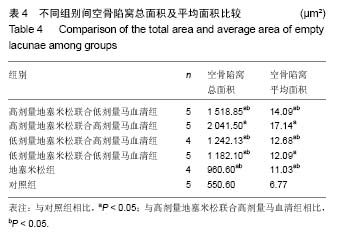| [1] Zhang KJ, Zhang J, Kang ZK, et al. Ibandronate for prevention and treatment of glucocotricoid- inducedosteoporosis in rabbits. Rheumatol Int. 2012;32(11): 3405-3411.[2] Lafforgue P. Pathophysiology and natural history of avascular necrosis of bone. J Bone Spine. 2006;73(5):500-507.[3] Zhao FC, Li ZR, Guo KJ. Clinical analysis of osteonecrosis of the femoral head induced by steroids. J Orthop Surg. 2012; 4(1):28-34.[4] Motomura G, Yamamoto T, Irisa T, et al. Dose effects of croticosteroids on the development of osteonecrosis in rabbits.J Rheumatol. 2008;35(12):2395-2399.[5] Erken HY, Ofluoglu O, Aktas M, et al. Effect of pentoxifylline on hisopathological changes in steroid-induced osteonecrosis of femoral head:experimental study in chicken. Int Orthop. 2012;36(7):1523-1528.[6] Jaffe WL, Epstein M, Heyman N, et al. The effect of cortisone on femoral and humeral heads in rabbits.An experimental study. Clin Orthop Relat Res. 1972;82:221-228.[7] Hu ZM, Wang HB, Zhou MQ, et al. Pathological changes of the blood vessels in rabbit femoral head with glucocorticoid-induced necrosis. Nan Fang Yi Ke Da Xue Xiao Bao. 2006;26(6):785-787.[8] Matsui M, Saito S, Ohzono K, et al. Experimental sterioid-induced osteonecrosis in adult rabbits with hypersensitivity vaasculitis. Clin Orthop Relat Res. 1992;277: 61-72.[9] Pietrogrande V, Mastromarino R. Osteopatia da prolongato tratta-mento cortisono. Orthop Traumatol dell'Apparto motore. 1957;25:791-810.[10] Wen Q, Ma L, Chen YP, et al. A rabbit model of hormone-inducedearly avascular necrosis of the femoral head. Biomed Environ Sci. 2008;21(5):398-403.[11] Bekler H, Uygur AM, Gökçe A, et al. The effect of steroid use on the pathogenesis of avascular necrosis of the femoral head:an animal model. Acta Orthop Traumatol Turc. 2007; 41(1):58-63.[12] Yamaguchi R, Yamamoto T, Motomura G, et al. Effects of an anti-platelet drug on the prevention of steroid-induced osteonecrosis in rabbits. Rheumatology. 2012;51(5):789-793.[13] Okazaki S, Nishitani Y, Nagoya S, et al. Femoral head osteonecrosis can be caused by disruption of the systemic immune response via the toll-like receptor 4 signalling pathway. Rheumatology (Oxford). 2009;48(3):227-232.[14] Zeng P, Wei BF, He W, et al. Advances in researches on genetic predisposition to steroid-induced osteonecrosis of the femoral head. Zhongguo Gu Shang. 2010;23(2):156-159.[15] Wang W, Liu LW, Wang KZ. Construction of the model of steroid-induced osteonecrosis in rabbits and exploration of the pathogenesis of the osteonecrosis femoral head. Xian Jiaotong Daxue Xuebao. 2007;28(5):545-547.[16] Chen KT, He JY, Liu JM, et al. Making and multiple evaluation of model of pre-early steroid-induced femoral head osteonecrosis of rabbits. Shiyong Yixue Yingxiang Zazhi. 2012;12(6):341-343.[17] Li RQ, Zhang GP, Li YJ, et al. Study on caput femoris necrosis model of rabbits. Xiandai Zhongxiyi Jiehe Zazhi. 2013;10; 22(28):3087-3089.[18] Liu Z, Zhang G, Man CW, et al. Establishment of a steroid-induced osteonecrosis animal model in bipedal emus. Bone. 2010;47(6):S447.[19] Gorskaia EM. Current concepts of the mechanism of the local Shwartzman phenomenon. Patol Fiziol Eksp Ter. 1981;(5): 79-83.[20] Powell C, Chang C, Gershwin ME. Current concepts on the pathogenesis and natural history of steroid-induced osteonecrosis. Clin Rev Allergy Immunol. 2011;41(1): 102-113.[21] Wang YH, Zhang CL, Tian SQ, et al. Establishment of rabbit models of corticosteroid-induced avascular necrosis of femoral head. Zhongguo Zuzhi Gongcheng Yanjiu. 2011; 15(24):4419-4422.[22] Nakata K, bMasuhara K, Nakamura N, et al. Inducible osteonecrosis in a rabbit serum sickness model:deposition of immune complexes in bone marrow. Bone. 1996;18(6): 609-615.[23] Zhao JD, Lu SC, Xue Z, et al. Establish and evaluate animal models of steriod-induced osteonecrosis of the femoral head. Zhogguo Guzhongliu Gubing. 2007;6(4):220-225.[24] Li C, Shang XF, Li X, et al. The experimental study of improving the survival rate of rabbits in steriod-induced osteonecrosis of the femoral head models. Anhui Yike Daxue Xuebao. 2014;49(12):1726-1729.[25] Li RQ, Zhang GP, Li YJ, et al. A method for elevating survival rate of models of steroid-induced necrosis of femoral head. Zhongguo Zuzhi Gongcheng Yanjiu. 2013; 17(50):8729-8734.[26] Ichiseki T, Matsumoto T, Nishino M,et al.Oxidative stress and vascular permeability in steroid-induced osteonecrosis model. J Orthop Sci. 2004;9(5):509-515.[27] Wang Lin, Luo dengke and Pan zhenyu. Expression of 11β-HSD in steroid-induced avascular necrosis of the femoral head. Mol Med Rep. 2013;7(5):1482-1486 |
